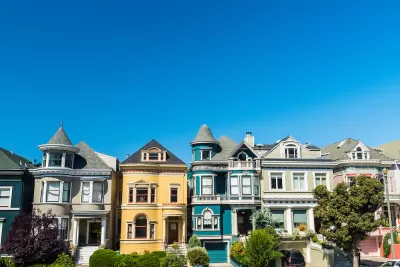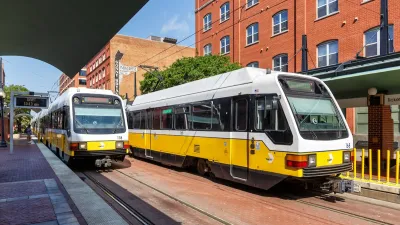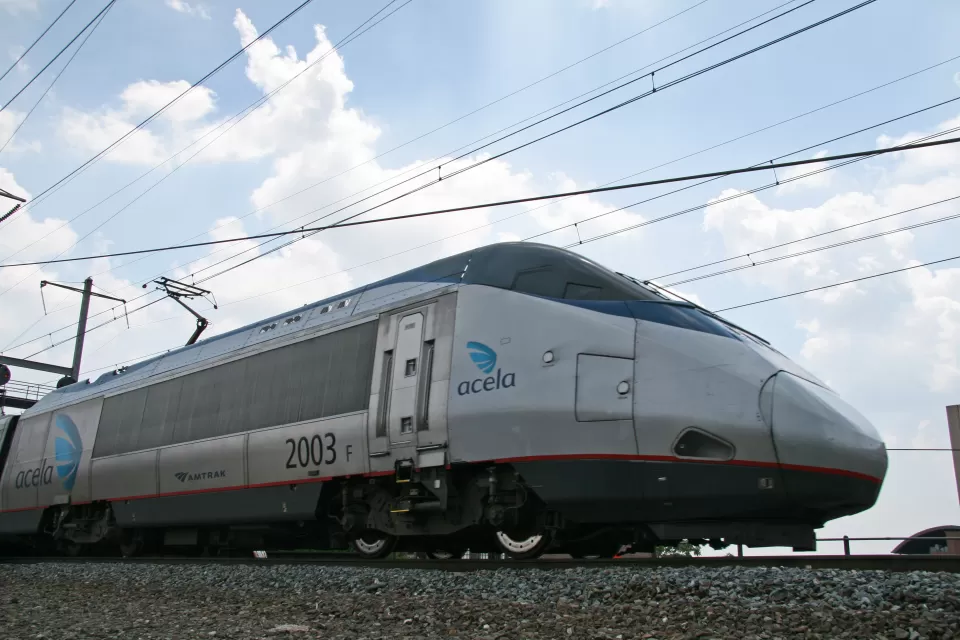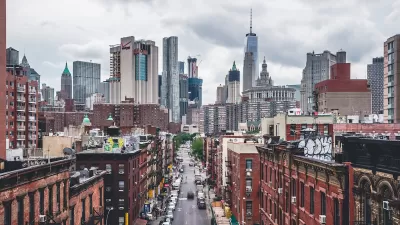A “Planners’ Pledge” created by some of the leading authorities on planning sets forth a bold urbanist agenda- even if not every idea in the pledge is equally useful in all cities.

When I attended the Congress for New Urbanism (CNU) conference last year, Jeff Speck spoke eloquently about the idea of a “Planners’ Pledge.” Planners could sign the pledge to commit to more environmentally friendly, walkable development.
The Pledge is now public, and it is signed by some of the most eminent authorities on urban policy, including people who I have known for decades such as Emily Talen and Scott Bernstein, as well as newer voices like Peter Norton, Diana Lind, and Angie Schmitt. Naturally, the Pledge has much to recommend it — but also includes some ideas I am not so enthusiastic about.
The Pledge begins with an explanatory section, pointing out that “planners have contributed to the creation of a landscape that separates us ruthlessly both from different activities … such that we are inordinately connected to our automobiles and less connected to one another.” The Pledge then contains a set of “whereas” clauses elaborating on this idea, thirty concepts that planners should encourage, and fifteen that planners should discourage.
Most of the “encourage/discourage” policies are exactly what I would have expected from New Urbanists. For example, the Pledge endorses encouraging more housing in walkable areas and dense development near public transit, while suggesting that highway construction and car-dependent places should be discouraged. Although I agree with these goals, I was especially heartened by the Pledge’s emphasis on street design, an area that might have gotten less coverage before the growth of car crash deaths in the 2010s and 2020s. Rather than merely throwing on a few platitudes about Vision Zero, the Pledge urges that roads be limited to a design speed “no higher than the desired vehicle speed” and sizing “firefighting equipment to fit community streets and not vice versa” (in other words, narrower streets). More broadly, the Pledge urges planners to discourage the creation of new streets that do not “safely welcome pedestrians and cyclists” and to oppose the use of environmental review that stalls pedestrian and cyclist facilities.
On the other hand, the Pledge does have a few ideas that seem dated to me. The Pledge contains too many platitudes about community engagement for my taste, stating that planners should encourage a “fully inclusive community planning process” and discourage the “creation of any neighborhood plan without first engaging the local community.” It seems to me that this emphasis on community planning may have made more sense a few decades ago when housing supply and housing costs were not nationwide problems.
But today, it seems clear to me that the interests of an individual neighborhood (let alone the interests of the tiny fraction of neighborhood residents who attend planning-related meetings) are often not the interests of the broader city, region, or planet. It may be rational for each neighborhood to want to preserve the status quo. For example, even if planners inform a wealthy neighborhood’s residents that new housing might not lead to an influx of poor people or traffic, the residents might understandably be afraid of taking a chance. But if every neighborhood stops or slows down the healthier changes endorsed by the Pledge, no housing gets built, and people priced out of existing housing may be forced to move to automobile-dependent suburbia.
The Pledge also encourages planners to support inclusionary zoning. Inclusionary zoning (requiring developers to set aside a certain percentage of apartments for unprofitable, lower-income housing) makes sense if you think developers can afford to build unprofitable apartments and still make a healthy profit. But this idea seems less plausible now than it did a couple of decades ago: rising land costs, rising construction costs, rising taxes, and rising insurance costs have made all forms of development less profitable in many places. It follows that burdening developers with an additional tax (in the form of unprofitable apartments) seems likely to reduce housing supply.*
The Pledge comes down strongly on the side of historic preservation, urging planners to discourage the “destruction of any significant sidewalk-facing building façade more than 100 years old.” This restriction seems to me quite sensible in newer cities such as Orlando, where such buildings are either rare or concentrated in a small number of historic neighborhoods. But in older cities like mine, there are many, many such buildings, so preserving of all of them would make the creation of new homes and apartments far more difficult than in Orlando. Some of the older cities with the most pre-1925 buildings are also the cities with the best public transit (such as New York). So freezing older buildings in place seems to me a bit inconsistent with the Pledge’s goal of transit-oriented development.
On balance, I certainly find at least 80 percent of the Pledge appealing. But I suspect that if it was written by planners younger than myself, or maybe just planners with more market-oriented views, it would be a bit different.
*For a much more detailed discussion I recommend this post.

Study: Maui’s Plan to Convert Vacation Rentals to Long-Term Housing Could Cause Nearly $1 Billion Economic Loss
The plan would reduce visitor accommodation by 25,% resulting in 1,900 jobs lost.

North Texas Transit Leaders Tout Benefits of TOD for Growing Region
At a summit focused on transit-oriented development, policymakers discussed how North Texas’ expanded light rail system can serve as a tool for economic growth.

Why Should We Subsidize Public Transportation?
Many public transit agencies face financial stress due to rising costs, declining fare revenue, and declining subsidies. Transit advocates must provide a strong business case for increasing public transit funding.

How to Make US Trains Faster
Changes to boarding platforms and a switch to electric trains could improve U.S. passenger rail service without the added cost of high-speed rail.

Columbia’s Revitalized ‘Loop’ Is a Hub for Local Entrepreneurs
A focus on small businesses is helping a commercial corridor in Columbia, Missouri thrive.

Invasive Insect Threatens Minnesota’s Ash Forests
The Emerald Ash Borer is a rapidly spreading invasive pest threatening Minnesota’s ash trees, and homeowners are encouraged to plant diverse replacement species, avoid moving ash firewood, and monitor for signs of infestation.
Urban Design for Planners 1: Software Tools
This six-course series explores essential urban design concepts using open source software and equips planners with the tools they need to participate fully in the urban design process.
Planning for Universal Design
Learn the tools for implementing Universal Design in planning regulations.
Ascent Environmental
Borough of Carlisle
Institute for Housing and Urban Development Studies (IHS)
City of Grandview
Harvard GSD Executive Education
Toledo-Lucas County Plan Commissions
Salt Lake City
NYU Wagner Graduate School of Public Service






























